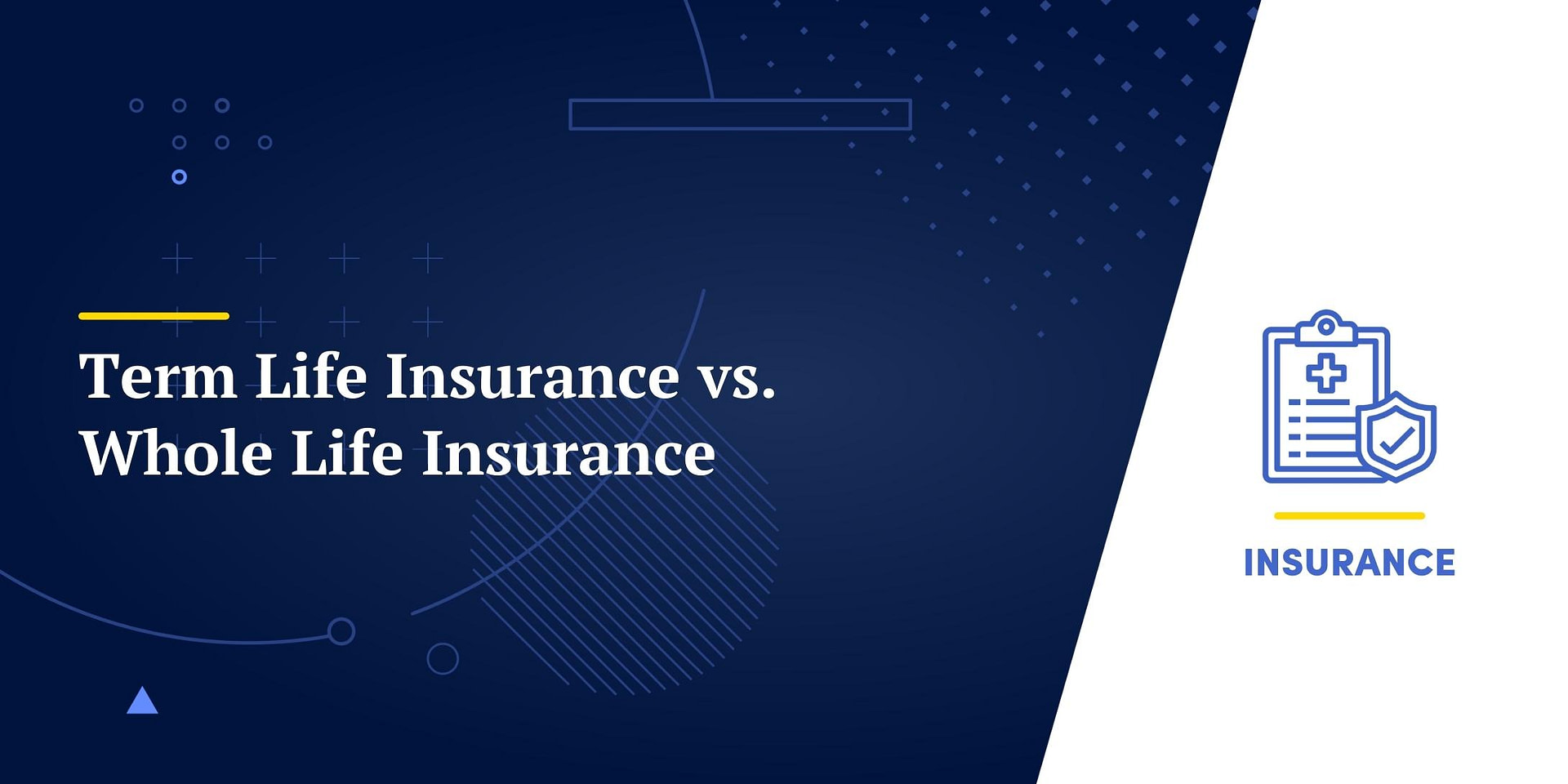Most people don’t like thinking about insurance but it is very important to have. Life insurance is especially important if you have loved ones that you need to take care of in the event that the unthinkable happens to you. However, you may have trouble deciding between term life insurance vs. whole life insurance.
Both term and whole life insurance offer a death benefit to your surviving family, but they work in very different ways, so it’s essential to understand the difference between the two.
What is Term Life Insurance?
Term life insurance is the simpler of the two different types of life insurance. It’s also the less expensive type of policy to purchase.
When a term life policy, you select a policy amount and length, also called the term.
You might choose to purchase a $500,000 policy with a term of twenty years.
Each month during those twenty years, you’ll get a bill from the insurance company. So long as you keep paying those bills, you’re covered.
Should you die, your heirs will get $500,000 from the policy.
After twenty years, the policy ends. You stop getting bills but are no longer insured.
How much you pay for a term life policy depends on many factors, including your age, sex, and whether you smoke.
These policies are good when you’re trying to protect against specific liabilities, such as a mortgage or paying for childcare, that your family might struggle with if you died.
 Pros
Pros
- Lower cost. Premiums for term life policies are cheaper and typically remain the same throughout the life of the policy.
- Customizable. You can select the term and the amount of insurance to purchase.
- Simplicity. Term life insurance is simple and easy for most people to understand. Pay your bill and your family gets a payment if you die.
 Cons
Cons
- Not permanent. Once the term ends, you lose your coverage. You’ll have to buy a new policy, which will likely cost more now that you’re older.
- No value unless you die. If you (hopefully) survive through the term of your insurance policy, you won’t get any value from the plan. Buying insurance is like gambling against yourself.
What is Whole Life Insurance?
Whole life insurance is a more complicated form of life insurance. Unlike term life insurance, whole life insurance is a permanent life insurance plan. So long as you keep up with the premiums, you’re covered for life.
Whole life insurance also has a cash value component. When you pay your monthly insurance premiums, a portion of that payment goes into your whole life insurance account. That amount can grow over time. You may also receive dividends from your insurer, which you can take as cash or use to increase your policy’s value.
Once your whole life policy reaches a certain value, you have the option to borrow money against the policy or to surrender your policy and give up the insurance in exchange for cash.
Like term life insurance, the death benefit is guaranteed, even if your policy hasn’t built up significant value yet. However, if you start borrowing against the policy and don’t pay back those loans, it can reduce the amount of the death benefit.
Whole life insurance costs more than term life insurance, but the cash value it builds can be appealing to some.
 Pros
Pros
- Permanent insurance. Your whole life insurance policy lasts until you die. It won’t expire as term policies do. All you have to do is keep making your monthly premium payments.
- Builds cash value. As you make payments toward the policy, your insurance policy gains value. You can borrow against the policy’s value or surrender the policy for a lump sum. This differs from term life where your premium payments don’t help you build value.
 Cons
Cons
- More expensive than term life. The monthly premiums for whole life insurance can be much higher than for term life insurance.
- Complexity. Understanding exactly how your policy works, how it builds value, and when you can access its value, can be complicated. That can make it hard to know if you’re getting a good deal.
Term Life vs. Whole Life Which Is Right for You?
Deciding between term life vs. whole life requires thinking about your financial situation and your reasons for buying insurance. Both types of insurance can help protect your family but they excel in different situations.
For example, term life policies are ideal for people who want to protect against a specific liability or for a specific period of time. A new parent might choose to buy a twenty- or thirty-year policy to help protect their children in the event that they die. Once their children are grown, an insurance policy to help pay for childcare and college is no longer necessary.
A similar situation is in the early days of owning a home with a spouse where a term policy can protect the surviving spouse from being unable to afford mortgage payments.
A whole life policy, on the other hand, is best for someone who wants guaranteed insurance for life. It can be difficult and expensive to renew term life policies as you age, so buying whole life insurance is a good way to stay covered for life.
Whole life insurance can also be a good choice for higher income people who want to reduce their tax burden. Whole life policies can gain cash value, much like an investment. Those increases in value aren’t taxed until you take money out of the policy or surrender it, making it a way to defer taxes.
Before deciding on which type of policy to buy, it’s a good idea to consult a financial advisor. They can help you come up with a financial plan and consider the ins and outs of both types of insurance.


